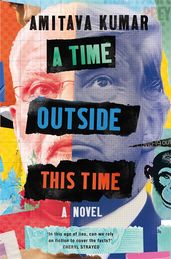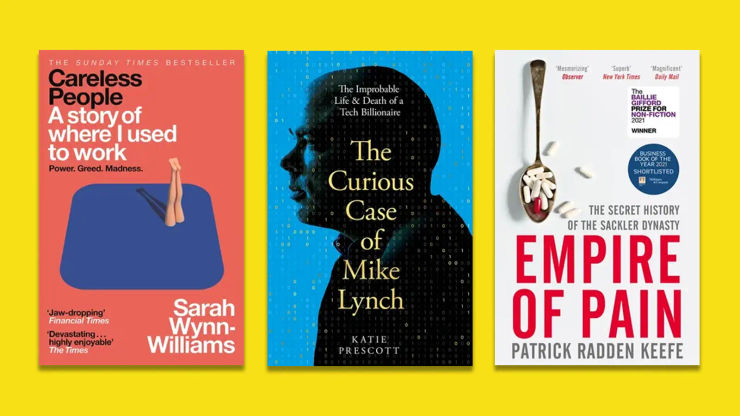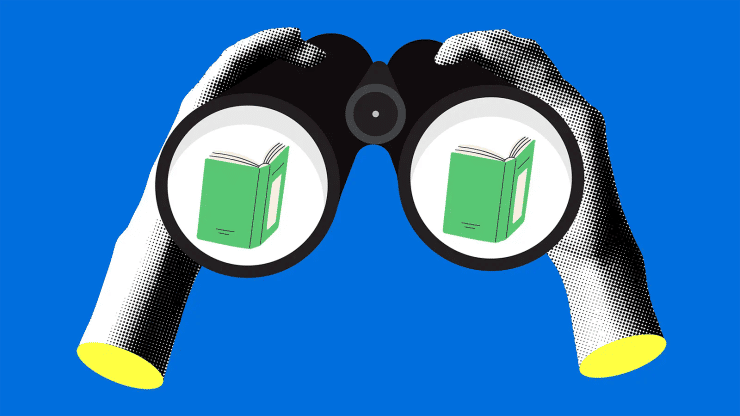Enemy of the People: Amitava Kumar on art versus politics
Amitava Kumar's novel A Time Outside This Time straddles the line between fiction and non-fiction, portraying a world where the truth of fiction is obscured by constant headlines of fake news and misinformation.

Throughout Donald Trump's four-year presidential term, writer and journalist Amitava Kumar watched in horror as the reputations of the free press and news organisations were attacked repeatedly by the American government and its supporters. The lies and constant deceit of Trump and his government very quickly became inspiration for Amitava's new novel, where a writer ensconced on a writing retreat struggles to block out the news cycle of the outside world. Having grown up in Patna, India - known for its widespread corruption - Amitava is keenly aware of how the truth is often suppressed by the powerful and believes that honesty in journalism is vital to saving society.
Here, he shows art's fight for honesty against power and politics, and reveals that media suppression has been happening for far longer than the last few years . . .
For much of the Trump presidency, I worked on a novel about the Trump presidency.
My protagonist, whom I had installed at an artist residency until a pandemic arrives, was writing a book titled Enemies of the People. What held more than a little fascination for me was that a failed real estate mogul, a hustler who was also a sex offender, had to a large extent launched a political campaign with a lie about the then president’s birthplace.
But the title of my protagonist’s novel had to do with a different lie. Over and over, Trump would send out angry tweets calling journalists and news organizations enemies of the people. (For example, on February 17, 2019, Trump tweeted, in all CAPS: “THE RIGGED AND CORRUPT MEDIA IS THE ENEMY OF THE PEOPLE.”) Op-eds reminded readers that Trump was repeating what Stalin had done to his opponents, and the Nazis to Jews. Journalists pointed out that Trump’s unhinged rants made their jobs not just difficult but also risky. I was born and grew up in India, a country that has become among the most dangerous for journalists to work in, but I confess I wasn’t thinking of attacks on journalists when I chose the title for my narrator’s novel.
Instead, I was thinking of the comedian Sarah Silverman. Silverman, playing Trump’s White House press secretary in the Hulu series I Love You, America, said: “Don’t be enemies of the people.” When I heard that, I felt that if all of us, writers and journalists, repeated Silverman’s injunction, the charge would lose its sting and parody would win over propaganda.
The question that I was struggling with, and I hope it doesn’t sound too grand when I put it this way, was how is art to respond to politics.
Unlike his predecessor, Trump is no reader. I knew he wouldn’t have read the Norwegian playwright Henrik Ibsen’s An Enemy of the People (1882). When I was finishing my novel, I read the play and then Arthur Miller’s 1950 adaptation which, while retaining much of the original, makes the play more contemporary. Later, I also watched the great Indian director Satyajit Ray’s film adaptation of the play, Ganashatru (1989). In Ibsen’s play, a doctor in a town famous for its springs writes in the local paper that the waters are dangerously polluted. He is considered a public enemy for doing this, and he and his family are quickly made outcasts.
‘One thing remains central . . . that what is most necessary, and what will save us, is the ability to tell the truth in the newspapers.’
In Ibsen’s play, and also in the adaptations which differ in important ways, one thing remains central: the doctor’s belief that what is most necessary, and what will save us, is the ability to tell the truth in the newspapers. The idea of a robust public sphere, where reason and morality prevail, is the bedrock on which the doctor bases his resistance. Alas, the doctor’s resistance doesn’t succeed. He fails.
At the end of his play, Ibsen has the doctor declaring that he has made a discovery: “It is this, let me tell you—that the strongest man in the world is he who stands most alone.”
There is a subtle shift in Arthur Miller’s adaptation, a more modest articulation of faith. The emphasis now is not on strength but on loneliness. The doctor says at the end: “You are fighting for the truth, and that’s why you’re alone. And that makes you strong. We’re the strongest people in the world … and the strong must learn to be lonely.”
By the play’s end, the audience has learned with the doctor that it is naïve to believe that the truth is always recognized as truth. In fact, it is foolish to believe that the truth will even be allowed to be spoken or otherwise shared. The idea of an enlightened public sphere is a sham and entirely at the mercy of those in power.
‘It is foolish to believe that the truth will even be allowed to be spoken or otherwise shared. The idea of an enlightened public sphere is a sham and entirely at the mercy of those in power.’
The newspaper that had earlier courted the doctor and wanted to publish his protest reveals itself as craven, even mercenary. Which is all to say, Ibsen seems to be preaching exactly what Trump used to tweet. The media is the enemy of the people!
In Ganashatru, Satyajit Ray’s film adaptation, there is an important departure from the earlier script. Prescient about the rise of Hindu majoritarianism and use of religion in Indian politics, the film shows the doctor discovering that contaminated water is being drunk at the temple where worshippers gather in large numbers.
In Ray’s version, not everyone in media is cowardly. A junior journalist working at the town’s newspaper quits his job and resolves, as a freelancer, to interview the doctor and spread the news in the papers printed in the distant metropolis. He will also make sure, he says, that the doctor’s report is published.
Delighted, the doctor tells the journalist that all he had ever wanted was “to inform the people.” He offers that his article will be titled “Confessions of an Enemy of the People.”
Not only that. In the film’s closing scene, the members of the local theatre-group and other educated liberals organize a march to support the doctor. We can hear the shouts (“Long live…”). And the doctor says: “I am not alone. I may be an enemy of the people, but I have a lot of friends.”
Ray’s is an altogether more hopeful ending, and one that at first disappointed me. I thought of all the activists and journalists that have been jailed ever since Prime Minister Modi came to power, not to mention the legion of mainstream journalists kowtowing to power, building a cult of personality around Modi.
At the same time, wasn’t it also true that every recent repressive move by the government, and even every act of incivility or brutality, had been countered with the eruption of democratic, nonviolent protests? Unlike Ibsen, Ray didn’t want to show only the lonely individual raging against the machine; he wanted to portray local, resilient communities coming together to fight for their embattled truths.
I made the final changes in my novel in the days immediately after Trump’s defeat in the election. For a while, and then for longer, it seemed that he wasn’t going to accept that he had lost. The violent insurrection at the Capitol in Washington, D.C. showed that his followers were equally unlikely to admit the truth.
In those days of uncertainty and chaos, as I brought my novel to an end, what did I find out about art’s relationship to politics? In the closing pages, my narrator is talking to a young man, a student, who has returned from a Black Lives Matter protest in upstate New York. In conversation via Zoom during the pandemic, they each begin to write down what they have experienced in recent days. What the two men, one young and the other old, are doing is bearing witness. They are trying to record their truth without being overwhelmed or defeated by it. Both are aware of the odds but what they also want to do, I think, is let their testimony reveal what is most dear to them, their precious humanity.
A Time Outside This Time

A remarkable book written at the borderline of fiction and non-fiction, describing a world where the truth of fiction is blurred with and fake news and misinformation. Following Satya, a novelist, as he struggles to block out the pressures of the outside world during a prestigious artists' retreat. However, the unending headlines begin to form an idea for a novel about the lies we tell ourselves and each other.
Amitava Kumar’s A Time Outside This Time captures our fever-pitch political moment with a precise voice, observant intelligence and an eye for the uncanny.


